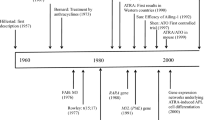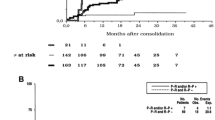trans
retinoic acid (ATRA), both PML-dependent apoptotic mechanisms and myeloid-specific gene expression programs are reactivated. In the clinic, the combination of anthracycline-based chemotherapy plus ATRA cures approximately 80% of APL patients, and a high percentage of relapsed patients can achieve second remissions with arsenic trioxide. With the publication of results from the European APL 93 trial, the ‘standard-of-care’ for induction treatment of APL now includes ATRA plus concurrent anthracycline-based chemotherapy. The amount and type of consolidation therapy necessary for an individual APL patient remains somewhat of an open question, but at present should include at least two cycles of chemotherapy. Based on recent trials that demonstrate a benefit of maintenance ATRA ( ± low-dose chemotherapy), all APL patients should probably receive some type of maintenance therapy. While the above approach currently cures the majority of APL patients, future improvements in the treatment of this disease will require risk-adapted protocols that incorporate real-time molecular monitoring and appropriate introduction of novel therapeutic agents.
Similar content being viewed by others
Author information
Authors and Affiliations
Additional information
Received: 19 August 1999 / Accepted: 9 November 1999
Rights and permissions
About this article
Cite this article
Slack, J., Rusiniak, M. Current issues in the management of acute promyelocytic leukemia. Ann Hematol 79, 227–238 (2000). https://doi.org/10.1007/s002770050585
Issue Date:
DOI: https://doi.org/10.1007/s002770050585




